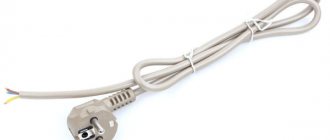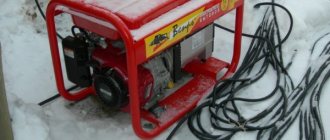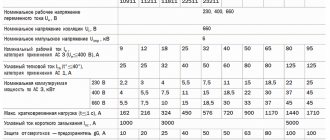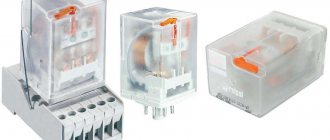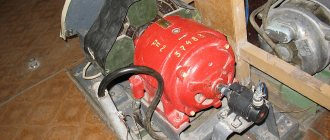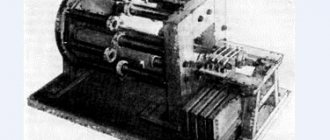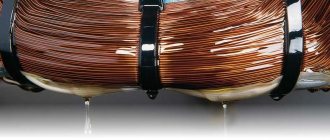Electromagnetic starters 220V, in essence, are one of the types of contactors. Used for switching heavy loads. Their main purpose is to start, stop and reverse asynchronous three-phase motors.
What is the difference between contactors and starters?
The first and probably most noticeable are the dimensions and weight. Since the contactor is a rather bulky thing, its weight is corresponding. The fact is that it is designed for switching very high loads.
Contactors use very powerful contact groups with arc-extinguishing chambers, which also greatly increases the dimensions. But even if the maximum operating current is the same, the contactor and starter will differ greatly in size.
Another point that immediately catches your eye is the open design of the contactors . For this reason, such equipment is installed exclusively in locked cabinets or rooms to avoid the penetration of foreign objects and moisture.
Application area
Due to their unpretentiousness and ease of installation, 220V electromagnetic starters are widely used to control all kinds of industrial and household equipment, such as machine tools, furnaces, ventilation systems. These can be all kinds of pumps and compressors, conveyor belts, cranes, lighting systems, escalators or banal elevators that we encounter every day. The scope of application is extremely wide - it’s impossible to list everything.
220V electromagnetic starters will protect the installation or machine from erroneous starting. The equipment will be turned off in the event of a power failure, which is very important in production to ensure safety (the so-called zero protection). Complete with a thermal relay, the device can protect the installation from abnormal overloads, which can damage it or completely disable it.
How to properly use a 220 V magnetic starter
When using a contactor, you need to pay attention to several points:
- coil temperature. If the surface of the coil is very hot, it is necessary to check its turns for short circuits. If the test result is positive, an urgent replacement of the element is required;
- Also, high temperatures can occur due to damage to contacts and too much load. To avoid this, it is better to take a contactor with a rated current value slightly higher than required;
- Contamination of the coil and contacts can also cause damage to the device, heating of its surface, and noise during operation.
Important! When using a contactor, you need to select a device that matches the characteristics of the circuit parameters, as well as keep it clean and monitor the temperature during operation.
A starter is a device that allows you to remotely release this voltage to consumers without interacting with high-voltage conductors. It should be installed only if its characteristics match the network parameters. You also need to take care of the device throughout the entire operation.
Types of electromagnetic starters
We are interested in electromagnetic starters with a supply voltage of 220V. Depending on the type of equipment connected through the starter, its power and operating conditions, starters of various types are used and the maximum permissible current on the operating contacts.
When choosing one option or another, first of all, you should pay attention to the operating conditions. Depending on them, three main groups can be distinguished:
- open (protection level IP 00) – used when installed in cabinets, panels and rooms protected from moisture, dust and foreign objects;
- protected (in a shell, degree of protection IP 40) – can be used in rooms with little dust;
- dust- and moisture-proof (in a shell, degree of protection IP 54) - can be used both indoors and outdoors (provided they are protected from direct sunlight and rain).
Characteristics and purpose of a magnetic starter
The main characteristics of an electromagnetic starter, based on which it is worth choosing one or another model for a given circuit, are as follows:
- maximum current in the main circuit in amperes (this parameter is also sometimes called the starter value);
- maximum voltage value;
- voltage applied to the magnetic coil. It is standard and can be equal to 24, 12, 110, 220 or 380 V. Some starters have coils in their design that are designed for direct current. They are usually connected to the main circuit, but through a rectifier;
- wear resistance. Determined by the number of switches on and off. It is calculated independently; the algorithm and coefficients are specified in the technical documentation. The number of switching on and off depends on the strength and voltage of the main circuit current, the selected operating mode and connection;
- current strength at additional contacts;
- magnetic coil power.
Device with remote buttons and button block
Please note! All these parameters must be taken into account when choosing, otherwise the coil will either not perform its functions or will soon fail.
Types of devices
In addition, there are two types of 220V electromagnetic starters:
- conventional - when power is supplied to the electromagnetic starter, the electromagnet attracts a metal core with contacts attached to it. In this case, normally closed contacts open, and normally open contacts close. When the power is turned off, the process is reversed;
- reversible - in essence, they are two conventional electromagnetic starters on the same base and have connections for blocking. This avoids turning on two starters at the same time.
According to the types of equipment connected using an electromagnetic starter, there are three groups: AC-1, AC-3 or AC-4 . They differ in the maximum permissible current of the main circuit and the type of connected load:
- AC-1 – inductive or low-active load;
- AC-3 – direct start mode of electric motors with a squirrel-cage rotor, shutdown of a running engine;
- AC-4 – starting the electric motor with a squirrel-cage rotor, switching off and braking with countercurrent.
Options with a different number of “signal” contacts or the presence of a built-in thermal relay are also possible.
Purpose and device
Magnetic starters are built into electrical circuits for remote starting, stopping and providing protection for electrical equipment and electric motors. The operation is based on the use of the principle of electromagnetic induction.
The basis of the design is a thermal relay and a contactor combined into one device. Such a device can also operate in a three-phase network.
Such devices are gradually being replaced from the market by contactors. In terms of their design and technical characteristics, they are no different from starters, and they can only be distinguished by their name.
They differ from each other in the supply voltage of the magnetic coil. It comes in 24, 36, 42, 110, 220, 380 W AC. The devices are produced with a coil for direct current. Their use in an alternating current network is also possible, for which a rectifier is needed.
The starter design is usually divided into upper and lower parts. In the upper part there is a movable contact system combined with an arc extinguishing chamber. Also located here is the moving part of the electromagnet, mechanically connected to the power contacts. All this makes up a moving contact circuit.
At the bottom there is a coil, the second half of the electromagnet and a return spring. The return spring returns the upper half to its original state after de-energizing the coil. This is how the starter contacts break.
Contactors are:
- Normally closed. The contacts are closed and power is supplied constantly; shutdown occurs only after the starter is triggered.
- Normally open. The contacts are closed and power is supplied while the starter is running.
The second option is the most common.
Design versatility
In simple 220V electromagnetic starters, signal contacts are usually used to organize “sticking”. Thus, for example, after briefly pressing the “start” button, the contacts of the starter will remain closed. In turn, in the event of even a short-term loss of voltage in the circuit, the contacts will open and remain in this position, even after power is restored, until the button is pressed again.
In the case of 220V electromagnetic reversing starters, signal contacts are used to block the second starter to avoid short circuits. A large number of signal contacts can be useful in the case of assembling more complex control systems (for example, with step-by-step switching of the load or additional indication in remote-controlled circuits).
Also, it is possible to increase the number of contact groups using an additional contact block (contact attachment). It is mounted on top of a 220V electromagnetic starter, for which purpose special skids with hooks are provided on the body of the latter.
Reversible circuit for connecting an electric motor through starters
In some cases, it is necessary to ensure that the motor rotates in both directions. For example, for the operation of a winch, in some other cases. A change in the direction of rotation occurs due to phase reversal - when connecting one of the starters, two phases must be swapped (for example, phases B and C). The circuit consists of two identical starters and a button block, which includes a common “Stop” button and two “Back” and “Forward” buttons.
Reversible diagram for connecting a three-phase motor through magnetic starters
To increase safety, a thermal relay has been added, through which two phases pass, the third is supplied directly, since protection in two is more than enough.
Starters can be with a 380 V or 220 V coil (indicated in the specifications on the cover). If it is 220 V, one of the phases (any) is supplied to the coil contacts, and “zero” from the panel is supplied to the second. If the coil is 380 V, any two phases are supplied to it.
Also note that the wire from the power button (right or left) is not fed directly to the coil, but through the permanently closed contacts of another starter. Contacts KM1 and KM2 are shown next to the starter coil. This creates an electrical interlock that prevents two contactors from being supplied with power at the same time.
Magnetic starter with a contact attachment installed on it
Since not all starters have normally closed contacts, you can take them by installing an additional block with contacts, which is also called a contact attachment. This attachment snaps into special holders; its contact groups work together with the groups of the main body.
The following video shows a diagram of connecting a magnetic starter with reverse on an old stand using old equipment, but the general procedure is clear.
Electric starters with thermal relay
As for the thermal relay, as mentioned above, it is used in case of possible long-term overload of equipment or insulation failure. In the circuit of such a relay, a bimetallic plate is installed that opens the circuit when the operating current is exceeded for a long time. The relay failure level is adjustable within ± 15% . Therefore, it is worthwhile to estimate the maximum permissible overload in advance.
However, when using such structures it is not recommended:
- installation in the upper part of the installation cabinet (the hottest air accumulates there);
- use in rooms (or areas thereof) with large temperature differences;
- operation on a chassis subject to strong vibrations or shocks. In particular, installation together with electromagnetic equipment with an operating current of more than 150A is not recommended, since during operation it produces quite strong shocks;
- installation in places where the temperature can rise above 40°.
There are nuances with reversible 220V electromagnetic units. The fact is that they are used mainly for starting , braking and reversing asynchronous electric motors. This operation is performed using a countercurrent supply and is associated with a sharp increase in the load on the main contacts of the starter. In this regard, when choosing a 220V electromagnetic reversing starter, you should include a reserve of one and a half to two times the current.
It may be worth mentioning permanent magnet electromagnetic starters. They are designed to be switched on with direct current and, if used in production, are usually connected via a rectifier.
Connection diagram for 220 V
Any electrical connection diagram contains 2 circuits, including for a single-phase network. The first is the power one, through which power is supplied. The second is a signal one. With its help, the operation of the device is monitored.
The connected contactor, thermal relay and control buttons form a single device, which is marked as a magnetic starter in the diagram. It ensures the proper functioning and safety of electric motors under various operating conditions.
Contacts for connecting the device's power are located in the upper part of the case. They are designated A1 and A2. So, for a 220 V coil, 220 V voltage is supplied. The order in which “zero” and “phase” are connected does not matter.
On the bottom of the case there are several contacts marked L1, L2, L3. The power supply for the load is connected to them. Whether it is constant or variable is not important, the main thing is the limitation of 220 V. The voltage is removed from contacts T1, T2, T3.
Service
As for the maintenance of a 220V electromagnetic device, in most cases it is not required at all, until the latter fails. The fact is that the working life of the starter is calculated by the number of closing-opening cycles, and we are talking about hundreds of thousands of such cycles . Of course, we are talking about correctly selected starters operating under normal conditions.
But still, it is worth monitoring the condition of the fastenings. The mounting bolts must always be tightly tightened. Also, it is worth protecting the starter itself from moisture and dust. The service life of the contacts depends mainly on the operating mode of the starter and the switched load. Cleaning contacts as a preventative measure is not recommended. Most likely, it will only reduce the service life of the device. Only in very rare cases, when severe melting of the contacts is detected due to emergency situations, is it possible to process them with a small needle file.
an uncharacteristic hum may occur , turning into chatter. In this case, you will have to disassemble it. Wipe the inside of the coil and core thoroughly with a dry cloth. Check the coil body for cracks and deformation.
When assembling or disassembling the starter, be sure to maintain the original position of the core and coil (they are already ground in and reduce humming).
How to connect a magnetic starter
Connecting a starter for a 220 volt electric motor can be done according to the simplest scheme. Contacts A1 and A2 are supplied with voltage from an outlet or some other current source (depending on the characteristics of the starter). Contacts L1, 2, 3 can be supplied with direct or alternating current of any voltage (depending on the characteristics of the device). In this case, for the electric motor it is 220 V.
The simplest scheme
Since starters are most often used for motors, a circuit with buttons for starting and stopping would be more convenient. The connection diagram remains virtually unchanged, with the exception of adding a few buttons to the control circuit.
Note! The buttons can be in the starter body, or they can be located somewhere remotely, which is one of the positive properties of this device.
You might be interested in How a voltage converter works
With start and stop buttons
The self-retaining circuit is that when the button is pressed once, the electromagnet is energized through additional contacts N.
Circuit with self-retaining function
To briefly summarize
We examined the main types of 220V electromagnetic devices and the nuances associated with their installation and operation. Also the main advantages and disadvantages of certain types. Of course, in the process of selecting switching equipment , one should proceed from the specific tasks and estimated budget.
There are a huge number of units on the market with a wide variety of parameters, which will greatly simplify the search for a solution to your problem, be it turning on a separate electric motor or automating an entire enterprise.
